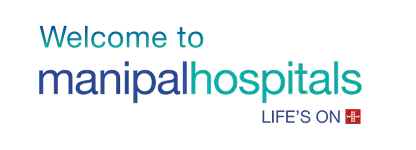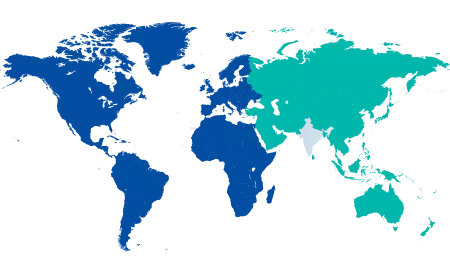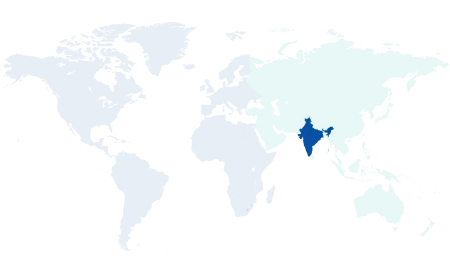.png)
Imagine you're having a normal morning—maybe sipping tea, chatting with family, or getting ready for work—and suddenly, your face feels numb, one arm becomes weak, and your words come out jumbled. This isn’t just fatigue or stress. It could be a stroke, and you need emergency help—fast.
At Manipal Hospital, Baner, we see such cases often. The good news? If caught on time, a stroke doesn’t have to be life-altering. With the right care, people recover and return to full, happy lives.
Synopsis
- What Exactly is a Stroke?
- Real-Life Story: Mr. Joshi’s Wake-Up Call
- The 3 Main Types of Stroke
- What Causes a Stroke?
- Recognising a Stroke: Act F.A.S.T
- Another Real Experience: Rekha Tai’s Courage
- How We Treat Stroke at Manipal Hospital, Baner
- How to Prevent a Stroke
- Why Choose Manipal Hospital, Baner, for Stroke Care?
- Conclusion
What Exactly is a Stroke?
A stroke happens when the blood flow to your brain is blocked or when a blood vessel in your brain bursts. Your brain cells start to die within minutes if they don’t get oxygen-rich blood. The damage can be temporary or permanent, depending on how quickly treatment begins.
We often tell our patients, “Time is brain.” Every minute counts. That’s why knowing the signs of a stroke and acting quickly can save a life—or a lifetime of complications.

Real-Life Story: Mr. Joshi’s Wake-Up Call
Mr. Pramod Joshi, a 62-year-old retired teacher from Pune, was watering his plants when his right arm suddenly went limp, and he slurred his words. His wife immediately called emergency services and rushed him to Manipal Hospital, Baner.
Because they reached the golden hour within 4.5 hours of symptom onset, our stroke team was able to administer a clot-busting injection (thrombolysis). Mr. Joshi started regaining movement the very next day and is now undergoing physiotherapy with our rehab team.
His quick recovery reminds us how early treatment can change the story.
Without the clot-busting injection, the patient would have permanent paralysis of one side of the body and become bedridden. But with treatment, he can be completely normal and resume his daily activities!
The 3 Main Types of Stroke
1. Ischemic Stroke – “Blocked Pipes”
This is the most common kind, seen in about 85% of our stroke patients. It’s like a pipe in your brain getting clogged with a blood clot or fatty deposit.
At Manipal Hospital, Baner, our specialists use high-end CT and MRI scans to locate the blockage fast. Once identified, we can dissolve or remove the clot through advanced treatments like thrombolysis or mechanical thrombectomy.
2. Hemorrhagic Stroke – “Burst Pipes”
Here, a weak blood vessel bursts, leaking blood into the brain. It’s more dangerous and often caused by high blood pressure, trauma, or a ruptured aneurysm.
These cases are delicate. Our neurosurgery team works around the clock to manage brain bleeds through surgery or intensive medical care in our neurocritical care unit.
3. TIA (Mini Stroke) – “A Warning Sign”
A Transient Ischemic Attack (TIA) is like your brain giving you a small warning — a clot temporarily blocks the blood flow, but symptoms go away in a few minutes. Don’t ignore it.
Many patients come to Manipal Hospital, Baner, after experiencing a TIA, not realising it could be the first sign of a major stroke. We guide them through preventive treatment, lifestyle changes, and regular follow-ups.
What Causes a Stroke?
While some strokes are unpredictable, most are preventable. Common causes include:
-
High blood pressure (most common)
-
Smoking
-
Diabetes
-
High cholesterol
-
Irregular heartbeat (like atrial fibrillation)
-
Stress and lack of sleep
-
Obesity and poor diet
-
Excess alcohol
We often say, “If you care for your heart, you’re also caring for your brain.” At Manipal Hospital, Baner, we conduct stroke risk assessments during health checkups, especially for those over 40.
Recognising a Stroke: Act F.A.S.T
When it comes to stroke, remembering this simple word—FAST—can help save a life:
-
F – Face drooping: Ask the person to smile. Is one side drooping?
-
A – Arm weakness: Ask them to raise both arms. Is one arm drifting down?
-
S – Speech difficulty: Are they slurring or unable to speak clearly?
-
T – Time to call emergency: Dial emergency services immediately.
The faster you act, the more of the brain can be saved.
Another Real Experience: Rekha Tai’s Courage
Rekha Jadhav, 49, a homemaker from Baner, thought she was just having a headache. But she suddenly collapsed while cooking. Her daughter rushed her to Manipal Hospital, Baner, where our emergency team identified a hemorrhagic stroke due to very high blood pressure.
She spent 12 days in our ICU, followed by intense rehabilitation. Today, she walks independently and shares her story in our patient support group.
Rekha Tai now tells everyone in her society to monitor their blood pressure regularly. Her story shows how important awareness and timely action are.
How We Treat Stroke at Manipal Hospital, Baner
Our Comprehensive Stroke Program includes:
Emergency Response Unit (ER) – 24/7 available
Advanced Brain Imaging – CT, MRI, and Angiography
Clot Removal – Thrombolysis or Thrombectomy
Surgical Care – If bleeding or an aneurysm is involved
Neuro ICU and Monitoring
Rehabilitation – Physiotherapy, speech therapy, occupational therapy
We don’t just treat strokes—we help you heal, recover, and rebuild your life.
How to Prevent a Stroke
Here are the tips we give every patient at discharge:
-
Monitor blood pressure, sugar, and cholesterol.
-
Stop smoking
-
Exercise at least 30 minutes daily
-
Eat more fruits, veggies, and whole grains.
-
Drink water; avoid alcohol
-
Learn stress management (yoga, walking, meditation)
-
Take medications as prescribed
And most importantly, never ignore warning signs like dizziness, slurred speech, or sudden weakness.
Why Choose Manipal Hospital, Baner, for Stroke Care?
✔ 24x7 stroke response team.
✔ Top neurology treatments by top neurologists, neurosurgeons, and rehab therapists.
✔ Advanced diagnostic and treatment tools.
✔ Patient-first approach with emotional support for families.
✔ Proven track record of successful recoveries.
We don't just treat patients—we walk with them through every step of their journey back to life.
A stroke can happen without warning, but its effects don’t have to be devastating. With awareness, quick response, and expert care, recovery is possible.
Conclusion
At Manipal Hospital, Baner, our mission is simple: to be there when you need us most—with skill, compassion, and hope.
If you or your loved one ever experiences stroke symptoms, don’t hesitate. Contact our emergency team or visit Manipal Hospital, Baner, immediately to get treated by a neurology expert.
Your life and your future are worth every second.
FAQ's
A stroke occurs when blood flow to the brain is blocked or a blood vessel bursts, causing brain damage. It requires immediate medical attention.
-
Ischemic stroke: Blockage of a brain artery.
-
Hemorrhagic stroke: Bleeding in the brain.
-
TIA (mini-stroke): Temporary blockage of blood flow.
-
Face drooping
-
Arm weakness
-
Slurred speech
-
Sudden confusion or trouble seeing
Common causes include high blood pressure, diabetes, smoking, high cholesterol, and heart problems.
Call emergency services immediately or visit Manipal Hospital Baner for fast treatment.
Yes, by controlling blood pressure, eating healthy, exercising, and quitting smoking.
Through CT scans, MRI, and angiography to identify the type of stroke.
-
Ischemic stroke: Clot-busting drugs or surgery.
-
Hemorrhagic stroke: Surgery to stop the bleeding.
Recovery varies but can take weeks to months with proper rehabilitation.






















 6 Min Read
6 Min Read



















